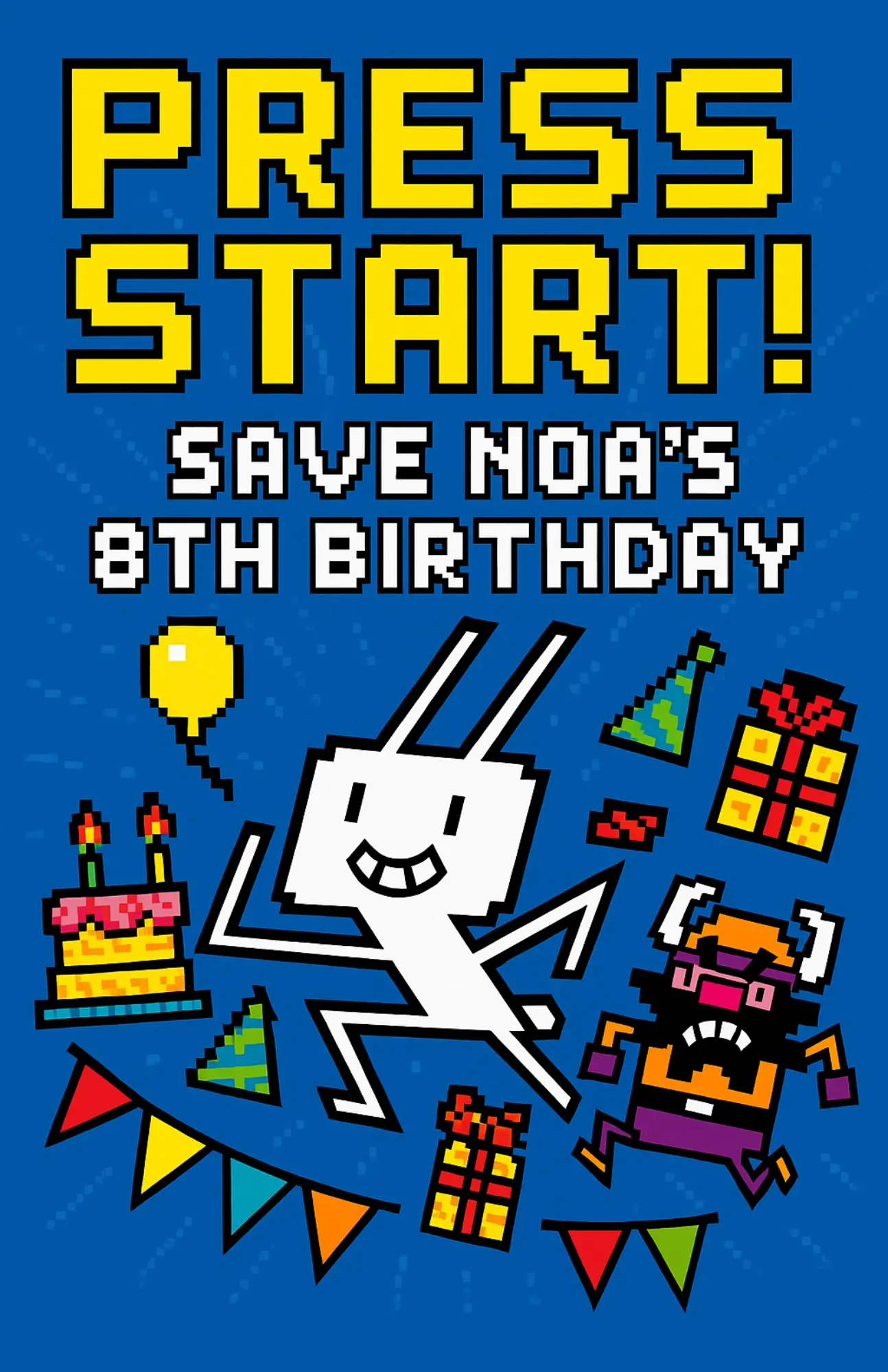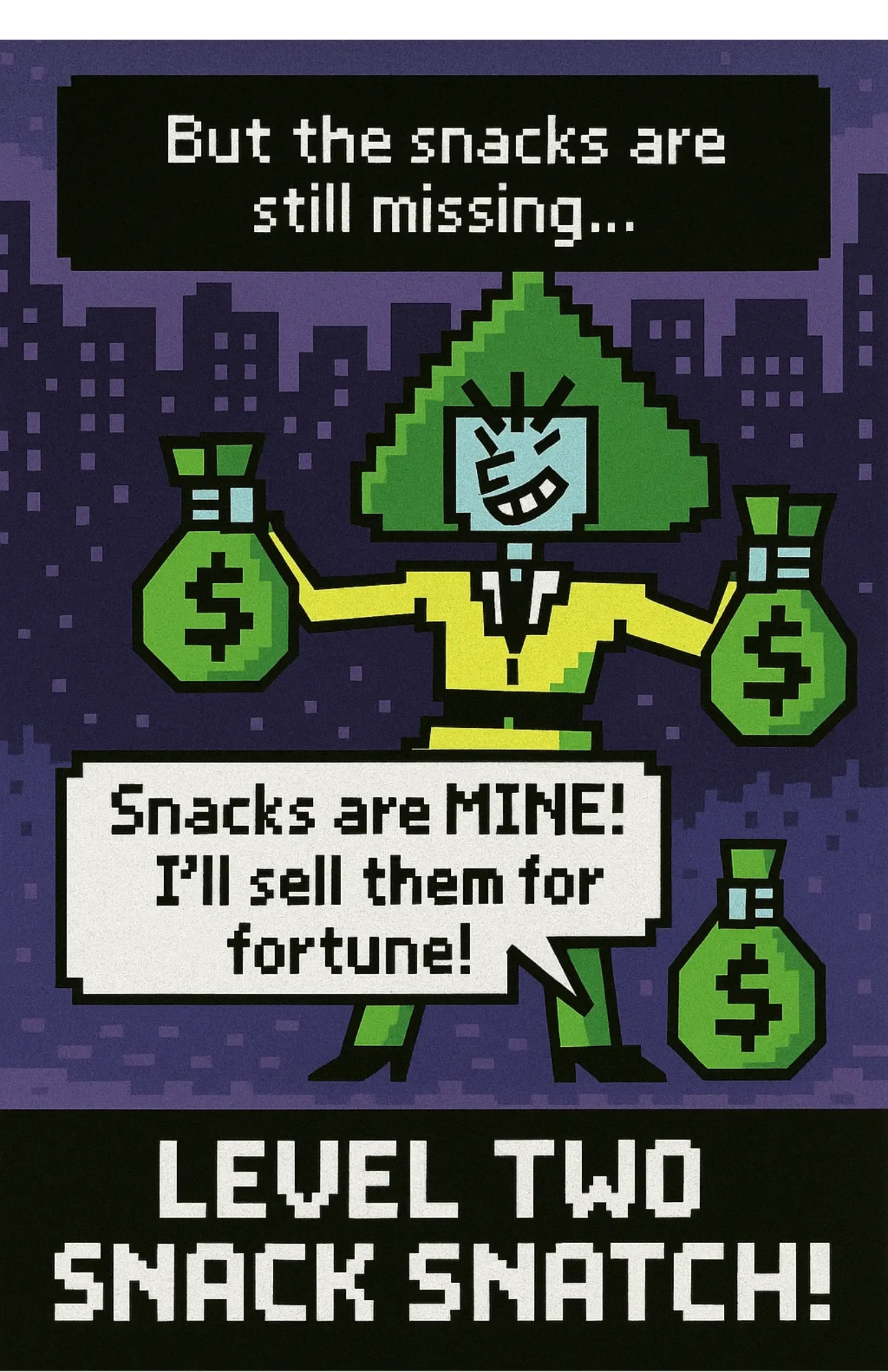Saving Noa’s Birthday With Super Rabbit Boy (and AI)
How AI helped us turn a favorite comic series into a one-of-a-kind party adventure.
My daughter Noa just turned eight, and she’s the kind of reader who’ll shush us mid-dinner if we’re too loud. Her latest obsession? Press Start: Super Rabbit Boy — Thomas Flintham’s pixelated comic novels that play out like video games, complete with levels, cliffhangers, and villains like King Viking and Queen Spooky.
So when she asked for a Super Rabbit Boy birthday, I knew the bar was high. In our house, birthdays mean spectacle — we’ve had baby animals in the living room and even built a real-life Pokémon Go. This one had to top them all.
The Big Idea
At first, we considered themed zones — King Viking Land, Queen Spoky’s Castle — but competition wasn’t going to work (Noa doesn’t love losing). That’s when inspiration struck: what if we wrote a brand-new Super Rabbit Boy book — one where the kids had to save Noa’s birthday themselves?
Writing the Plot With AI (and Human Fixes)
I turned to AI for help, but quickly learned it wasn’t great at making authentic Press Start plots. Instead, I used it to gather everything about the series — characters, patterns, villains — then I wrote a custom six-level story myself, building in challenges I knew kids would love. AI came back in to help storyboard it out.
Level 1: Decorations Down!
Villain: King Viking’s robot army has stolen the party decorations.
Challenge: Build 8 robots out of Magnatiles or blocks to defeat them and reclaim the streamers.
Level 2: Snack Heist
Villain: Ms. Business has stolen the snacks to resell for profit.
Challenge: Collect 5 money bags and 5 magic carrots hidden around the house to “buy” them back.
Level 3: The Candle Caper
Villain: Queen Spooky guards the stolen birthday candles with an army of stuffies in the basement.
Challenge: Descend into the “dungeon” with glow sticks, tie up the stuffies, and rescue the candles.
Level 4: Playlist Showdown
Villains: All the baddies team up and challenge the kids to a race.
Challenge: Build LEGO cars and compete in a fun, low-stakes race to win back the birthday playlist.
Level 5: Gigabot Battle
Villain: King Viking returns with his giant Gigabot, holding the goodie bags hostage.
Challenge: Each child designs and draws their own epic Gigabot to defeat him and free the bags.
Level 6: The Great Balloon Escape
Villain: King Viking escapes in a hot air balloon with the birthday cake.
Challenge: Build a “balloon” with real balloons and a giant box, then “fly” it to capture the cake and save the day.
Bringing It to Life
The hardest part of the project wasn’t the writing — it was the images. To make the book feel authentic, I uploaded dozens of references from the Press Start series and described the style: pixelated, bright, simple, with characters like Super Rabbit Boy, King Viking, and Ms. Business.
But AI has a funny way of drifting. One page would look perfect; the next, a character’s face would melt, their skin would turn green, or random objects would appear in the background. Text would duplicate, or the pixel effect would vanish halfway down the page. Consistency was the battle.
I found myself acting less like an illustrator and more like an editor-director, constantly pulling the images back into alignment:
“Make it more pixelated.”
“Remove the extra arms.”
“No, Queen Spooky should not be floating upside down.”
It was iterative and sometimes maddening, but slowly the visual language took shape. To refine the trickier pages, I added a one-month MidJourney subscription ($10) and used it to push the artwork closer to the exact Press Start aesthetic.
In the end, we produced a 40-page book that looked remarkably close to the originals: pixelated art, bold colors, clear villains, and level breaks that felt like they belonged in the series. It wasn’t perfect — but in the eyes of eight-year-olds, it was absolutely real.AI also helped me find a printer that could deliver 50 glossy, professional-quality copies for around $100. Each child got to take one home.
And to make things even better? My husband fully committed — he dressed up as King Viking himself, hat and all, to battle the kids. Needless to say, it was a hit.
What It Would Have Taken Without AI
Without AI, this project would have been nearly impossible for me to pull off as a parent. To make a custom Press Start book by hand, I would have needed to:
Hire or collaborate with an illustrator to mimic the pixelated art style.
Spend weeks designing layouts in InDesign or another publishing tool.
Research affordable print-on-demand services the old-fashioned way, one quote at a time.
Write and typeset 40+ pages entirely from scratch.
That’s the work of a small creative team — not something a parent can pull together between work, school pick-ups, and bedtime. AI gave me leverage: it didn’t replace my creativity, but it lowered the barrier to production so I could take on a project that would normally be out of reach.
A Note on Copyright
Press Start is a beloved series by Thomas Flintham, and what we created was our family’s playful homage. Imitation is the highest form of flattery, and this project was never for sale — it was a labor of love for Noa’s birthday. If anything, it only deepened her connection to the originals. She’s read every book cover to cover, and our “fan-fiction birthday edition” was just another way to celebrate a world that already brings her so much joy.
At Hold My Juice, we’re building technology that brings joy back to family life by creating space for what matters most. This post is part of a series exploring how you can use AI in everyday family moments — turning routines and even chaos into opportunities for laughter, creativity, and connection.



